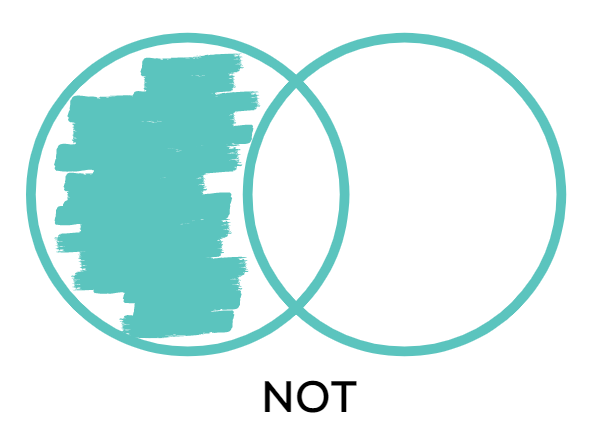

Finding related or supporting content on your site for internal linking purposes.Likewise, using boolean operators allows you to find optimized content that is more suited to your search.īelow are a few examples of how boolean operators can be used in SEO: A page on “youth and politics,” for instance, may not show up if its title tag and headers do not match the body of the text. Boolean operators can only make a search more productive if the content truly reflects its intent. Utilizing boolean operators and creating quality content is a two-way street. The following command, for instance, could return results for bank, banks, banking, bankers, bankruptcy, and more: This command is usually executed with an asterisk. Truncation allows you to search the root form of a word, making it useful to find multiple endings of the same word. Adding parenthesis then organizes the search. Since the words “politics” and “government” are often used interchangeably, including the command OR makes logical sense. If you were interested in learning about the politics in India, the following search may return the best results: These are generally used to bolster searches with the command OR. Any keywords included in parenthesis will be calculated first. Parenthesis tells a search engine what to prioritize. Parenthesis / (keyword OR keyword) keyword Without quotation marks, the search engine may also return results for only dresses, only blue dresses, or even blue dresses with people holding flowers. If you were looking for a blue dress with a flower print, the following search may return the best results: Without quotation marks, words in a phrase are treated separately. Quotation marks indicate that a search must be returned in that exact syntactical order, making these good for long-tail keyword research. If you were searching for the company “Apple” rather than the fruit, the following search may return the best results:Īpple NOT Fruit Quotation Marks / keyword “keyword” This command can be used to find a keyword that has two different meanings or associations. Google and Yahoo use a minus sign (-) in place of the command NOT. The boolean operator “NOT” allows you to search for one keyword while excluding another. The same goes for blogs and other website-specific features. If a site has a search glossary, you can add /search-glossary to narrow your search even more. Site:A search for the term “links” on this website, for instance, could be performed by typing: Simply type in “ site:” followed by the website’s URL: This command can be helpful when looking for a particular piece of content on a given website. The command “ site:” limits results to a specific website. Likewise, if you were looking for colleges, knowing you wanted to go to one in New England or in California, the following search may return the best results:īest Colleges in New England OR California The search will return articles about just silverware, just utensils, or both. If you wanted to buy new forks and spoons for your home, the following search may return the best results: These are good for including synonyms of a word, phrase, or title. The boolean operator “OR” informs the search engine to return either (or both) keywords. Human resources AND Recruiting OR / keyword1 OR keyword2 If you wanted to research human resources, but more specifically their recruiting process, the following search may return the best results:

By using this command, search engines should return fewer, but more relevant results. This allows you to search for two or more terms at the same time. The boolean operator “AND” informs the search engine that all keywords must be found in each SERP.

It is then able to return much more efficient results - if you know what you’re doing. In other words, when you insert a boolean operator into a query, the search engine looks for certain logical relationships between your chosen keywords, depending on which operators are used. The word “boolean” itself denotes a system of algebraic notation.

Otherwise thought of as shortcuts to better results, boolean operators are essentially just a way to tweak an algorithm. Whether you’re performing research for a school paper or for a client, these commands can come in handy. Understanding how boolean operators work is important for search engine optimization (SEO) specialists and non-specialists alike. Eliminating unwanted hits, these commands save time and effort. Either way, they help return search engine results pages (SERPs) that are more “in tune” with a searcher’s true intent. These commands combine or exclude keywords to expand or narrow a search. Boolean operators are a set of commands used with search engines, databases, and online catalogs.


 0 kommentar(er)
0 kommentar(er)
